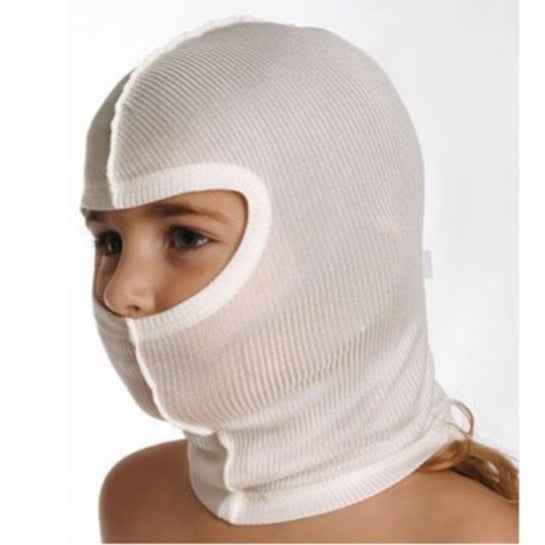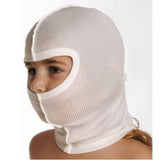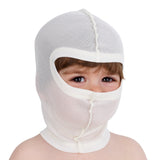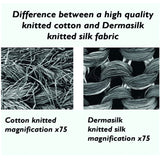The Dermasilk Facial Mask is highly recommended for children with eczema
The DermaSilk Facial Mask covers the head and forehead, chin and neck, balaclava-style, offering the healing properties of Dermasilk’s Microbe Shield technology in these difficult-to-treat areas.The stretchy knitted fabric allows you to position the Mask over the nose and lips if you wish.
The breathable medical grade silk of the Facial Mask retains moisture without feeling damp, and is bonded to a Microbe Shield™ that inhibits bacterial and fungal growth. No chemicals are released onto the skin and the Mask will remain effective after repeated washes.
There are 3 children's sizes:
to fit babies 6 months to 1yr (head circumference up to 47cm)
to fit children 1-3yrs (head circumference 47 to 50cm)
to fit children 3-12 years (head circumference 50 to 54cm)
The price you pay is VAT-free as this is a children's clothing item.
In clinical trials 83% of children with atopic dermatitis using DermaSilk showed an improvement in their condition.
There are also Facial Masks for teens and adults with a head circumference over 54cm.
Customer Review January 2024: Good quality product and quick delivery.
- Class 1 Medical Device
- promotes healing, protects against scratching
- Microbe Shield™ controls the spread of bacteria and fungi
- proven effective as corticosteroids in published clinical trials
- calms and soothes, seams on the outside
- lightweight, cool and comfortable
- 98% pure silk, 2% Lycra with Microbe Shield™
- hand wash, dry flat



